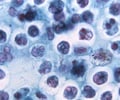The mechanisms behind a drug used to treat infections caused by trypanosome parasites have been uncovered by scientists from Queen Mary, University of London.

Their study investigated how nifurtimox works to kill off the trypanosome.
"Hopefully our research will lead to the development of anti-parasitic medicines which have fewer side effects than nifurtimox and are more effective," said Shane Wilkinson, co-author of the study.
"What we've found is that an enzyme within the parasites carries out the process nifurtimox needs to be converted to a toxic form. This produces a breakdown product, which kills the parasite.
"This mechanism overturns the long-held belief that nifurtimox worked against the parasites by inducing oxidative stress in cells," he said.
Wilkinson and his colleagues Belinda Hall and Christopher Bot from the University's School of Biological and Chemical Sciences focused their research on the characterisation of the breakdown product from nifurtimox.
Advertisement
"When the parasite enzyme reacts with nifurtimox, it converts the nitro group to a derivative called hydroxylamine. The change effectively acts as a switch causing a redistribution of electrons within the compounds chemical backbone.
Advertisement
"Understanding how nifurtimox kills trypanosomes may generate new and safer compounds which utilise the bioreductive activity of this parasitic enzyme," he added.
The study appeared in the Journal of Biological Chemistry.
Source-ANI








